Tendinopathy: pathophysiology, pain mechanisms and management strategies
Tendinopathies are problematic to manage clinically. People of different ages with tendons under diverse loads present with varying degrees of pain, irritability, and capacity to function. Recovery is similarly variable; some tendons recover with simple interventions, some remain resistant to all treatments. (Cook&Purdam 2009)
The classic description of the tensile load-bearing region of tendon includes 3 main components (Scott et al. 2015):
-
type I collagen fibers, which are predominantly longitudinally oriented;
-
a well-hydrated, noncollagenous extracellular matrix (rich in glycosaminoglycans);
-
cells: fibroblasts responsible for the sinthesis of collagen fibres and extracellular matrix.
In addition to the primary load-bearing part of the tendon, there is an extensive network of septae (endotendon), where the nerves and vessels are mainly located (Scott et al. 2015).
Patients with tendinopathy display tendons that are thicker, but with reduced energy-storing capacity, meaning that for the same load, their tendons exhibit higher strains than those of healthy individuals (Scott et al. 2015). This represents a decline in both the structural and material properties of the tendon tissue. Indeed, abnormal tendon histology is correlated with reduced load-bearing capacity (Scott et al. 2015).
TENDON PATHOLOGY CONTINUUM THEORY
Cook&Purdam in 2009 proposed that there is a continuum of tendon pathology that has three stages: reactive tendinopathy, tendon dysrepair (failed healing) and degenerative tendinopathy (tab 1). The model is described for convenience in three distinct stages; however, as it is a continuum, there is continuity between stages.
|
PATHOPHYSIOLOGY |
REVERSIBILITY |
||
|
REACTIVE TENDINOPATHY |
YOUNGER ATHLETES: acute overload DECONDITIONED PEOPLE exposed to moderate load |
Chondrocytes ↑ proteoglycans production matrix changes, swelling and thickening |
Reversible if: overload is reduced appropriate time between loading sessions |
|
TENDON DYSREPAIR |
YOUNGER ATHLETES: cronically overloaded OLDER PERSON with stiff tendons. |
↑ chondrocytes and myofibroblasts ↑↑ proteoglycans production separation of the collagen and localised disorganisation of the matrix, thickening. There may be an increase in vascularity and associated neuronal ingrowth. |
Some reversibility if: appropriate load management exercise to stimulate matrix |
|
DEGENERATIVE TENDINOPATHY |
OLDER PEOPLE ELITE ATHLETES chronically overloaded |
Chondrocytes death/exhaustion areas of acellularity , disordered of large areas of the matrix filled with vessels, matrix breakdown products and collagen. |
Little capacity for reversibility of pathological changes at this stage. Risk of rupture |
Tab 1
TENDON PAIN
This classification, however doesn't consider pain since research of imaging evidences that:
-
imaging-identified tendon pathology exists in asymptomatic persons (Docking et al. 2015)
-
a patient’s recovery can occur without reversal of imaging-identified tendon pathology (Ryan et al. 2015)
-
there is no identifiable pathology of significance in some cases of tendinopathy (Docking et al. 2015)
Tendon pain remains an enigma.
Many clinical features are consistent with tissue disruption—nociceptive pain (Rio et al. 2014):
-
Tendon pain has a transient on/off nature closely linked to loading, and excessive energy storage and release in the tendon most commonly precedes symptoms
-
Pain is rarely experienced at rest or during low-load tendon activities
-
tendon ‘warms up’, becoming less painful over the course of an activity, only to become very painful at variable times after exercise
Others features fits better with central nervous system senstitisation aspects (Rio et al. 2014):
-
Tendon pain is often persistent
-
Pain has little linking with pathology
BASIS FOR NOCICEPTIVE PAIN
Innervation studies in human tendon show scant innervation in the tendon proper, however, tendon connective tissue and blood vessels are well innervated (Danielson et al. 2006) with three neuronal signalling pathways: autonomic, sensory and glutamatergic.
Increased vascularity has been reported to be a source of nociception in tendinopathy. Nerves, and receptors such as adrenoreceptors, are found in vessel walls in tendinosis and are likely to be associated with angiogenesis and blood flow rather than having any role in nociception (Ohberg et al. 2001). However, neovascularisation has been associated with degenerative tendinopathy but is not a feature of early pathology, such as reactive tendinopathy (Rio et al. 2014).
Increased lactate lactate, due to a predominant anaerobic metabolism, occurs in tendons of older people as well as tendinopathy (Alfredson et al. 2002). Accumulation of lactate and decrease of pH has been associated to pain in skeletal muscles and intervetebral discs and could be a possible source in tendons too (Rio et al. 2014). A decrease of the extracellular pH influences the expression of acid sensing ion channels (ASICs); ASICs are activated quickly by hydrogen ions and inactivate rapidly despite continued presence of low pH, exhibiting features of saturation (Kellenberger et al. 2002). This saturation phenomenon could explain the tendon warming up response (Rio et al. 2014)
Other ion channels in tendons such as the stretch-activated ion channels (SAC), voltage-operated ion channels (Wall et al. 2005) or other mechanically gated channels may be implicated in nociception sensing and transmission. Activation of SACs would fit the load based on/off nature of tendon pain and the clinical observation that pain gets stronger with
increased loading (which would correlate with increased channel activation) and the ‘warming up’ phenomenon as ion channels become saturated (Rio et al. 2014).
CENTRAL AND SYSTEMIC PAIN PROCESSES
Despite all this “local” possible nociceptive inputs tendon pain could centralise but pain doesn't spread and is load-linked. Bilateral pain is frequent and CNS neuroimmune mechanisms offer an explanation for this mirroring.
Unilaterally loaded animal models that demonstrate bilateral pathology (Anderson et al. 2011) implicate systemic or nervous system involvement in tendinopathy.
Simpathetic nervous system could play a role as well, since SNS markers was seen in abnormal tenocytes from painful tendons (Jewson et al. 2015).
High frequency train of input streghtens CNS sensitisation and in tendinopathy enough time between high loads is important to control pain (maybe not only for local tendon tissue adaptation)
Theoretically, in reactive tendinopathy (as described by Cook & Purdam in 2009) there may be increased expression of nociceptive substances because of cell activation and proliferation, but no change in innervation (Rio et al. 2014).
In degenerative tendinopathy there may be little expression of nociceptive substances due to cell inactivation or death but greater innervation (Rio et al. 2014).
The pain-free tendon may have substantial matrix disorganisation and cell compromise, but insufficient production of nociceptive substances and/or the neural network to reach a threshold to cause pain (Rio et al. 2014).
Tendon pain serves to protect the tendon...spinal nociceptors are just only one contributor to this evaluation and research on pain suggests that higher centers can target local tissues if brain concludes that they are in danger (Rio et al. 2014).
MANAGEMENT OF TENDINOPATHY
The management of tendinopathies requires unavoidably to load the tendon, but when, how much, with what frequency and volume and in which modality?
For ease of use clinically, tendon pathology patient could be divided into two clear groups: reactive/early tendon dysrepair and late tendon dysrepair/degenerative (Cook & Purdam 2009).
REACTIVE/EARLY TENDON DYSREPAIR
The keystone to manage these patients, usually younger atheltes, with swollen tendons and some inflammatory reaction on course is the appropriate management of load reducing impact of offending activities (Cook & Purdam 2009; Vicenzino 2015).
The assessment and modification of intensity, duration, frequency and type of load is fundamental (Cook & Purdam 2009). It could be often useful to allow a day or two between high or very high tendon loads (Cook & Purdam 2009).
Tendon response in type 1 collagen precursors peaks around 3 days after a single bout of intense exercise, suggesting that time interval for adaptive response is an important factor (Cook & Purdam 2009).
Tendon load without energy storage and release, such as cycling or strength-based weight training, can be maintained, as this is less likely to induce further tendon response (Cook & Purdam 2009).
Conversely, highload elastic or eccentric loading, particularly with little recovery time (eg, on successive days), will tend to aggravate tendons in this stage (Cook & Purdam 2009).
ISOMETRIC CONTRACTIONS: recent evidence shows that high-load isometrics may relieve pain and, as such, may be good to implement early in the rehabilitation program. In the early acute painful stages of insertional tendinopathies in particular, isometric and isotonic exercises should be performed in positions that do not compress the insertion (Rio et al. 2015).
LATE DYSREPAIR/DEGENERATIVE
Cronically overloaded athletes and older people with stiff and nodular tendons join this subgroup (Cook & Purdam 2009).
Treatments that stimulate cell activity, increase protein production (collagen or ground substance) and restructure the matrix are appropriate for this stage of tendinopathy (Cook & Purdam 2009).
Passive management such as frictions and extracorporeal shock wave therapy has been showed to be less effective than exercise and not superior to placebo (Cook & Purdam 2009; Capan et al. 2015; Scott et al. 2015).
ECCENTRIC CONTRACTIONS: eccentric contractions exercises has been shown to affect both tendon structure and pain. Eccentric exercise has been shown to improve tendon structure in both the short term (Shalabi et al. 2004) and the longer term and decrease tendon vessels in particular in Achilles and patellar tendinopathies (Ohberg et al. 2004; Lanberg et al. 2007; Konsgaard et al. 2009).
For Achilles tendinopathy patients the 12 weeks protocol by Afredson could be recommended (Alfredson et al. 1998).
Eccentric exercise is an effective pain-relieving treatment, with pain changing in the first 4–6 weeks (Roos et al. 2004).
Eccentric exercises are effective for upper limb tendinopathies, but its superiority against other methods is not totally clear (Ortega-Castillo & Medina-Porqueres 2016).
HEAVY SLOW RESISTANCE: heavy slow resistance exercises seem another good option since they could reduce pain and thickness and neovascularisation as well (Beyer et al. 2015).
MOTOR CONTROL vs STRENGHT in PATELLAR TENDINOPATHY
Patellar tendinopathy patients show bilateral changes in motor control despite rehabilitation.
These patients may have difficulty grading activation of their rectus femoris muscle in functional tasks and may overshoot or undershoot recruitment compared with task demands probably because of cortical inhibition and/or increased corticospinal excitability (Rio et al. 2015).
While there was increased cortical inhibition altering motor drive in patellar tendinopathy, there was also greater corticospinal excitability CSE) than in controls inferring differences in the balance of excitability and inhibition of motor control as compared with healthy controls (Rio et al. 2015).
People with patellar tendon abnormality (pathologically observable on ultrasound) have demonstrated landing patterns different from those of controls and importantly, have less variability in movement than healthy controls (Edwards et al. 2010). Movement variability is thought to minimise load accumulation in a specific region and reduced variability may be observed in, for example, reduced coefficient of variation in knee joint angles during a landing task (James et al. 2000). The invariable motor pattern implies that corticospinal control is altered in some way and may be due to protective strategies underpinned by evaluative processes relating to the consequence or meaning of the motor task (Rio et al. 2015).
Then improving strength could improve tendon's mechanical properties but without addressing motor control issues could contribute to ongoing morbidity or vulnerability to symptom recurrence. (Rio et al. 2015).
Rio et al. (2015) trialled two strategies with EXTERNALLY PACED isometric and isotonic quadriceps contractions. Both protocols provided pain reduction at 4 weeks and, more important, improved inhibition.
IS THERE ROOM FOR MANUAL THERAPY?: CAUSATIVE FACTORS
It is easy to understand that tendons may become painful after familiar activities (eg, running, pitching) performed in excess, overloading the tendon (overuse). However, it is less clear whether this scenario is strictly related to tendon overload or whether degradation in quality of motion may also be a causative factor.
Perhaps suboptimal motion quality is partly to blame. Tendinopathies are often placed in the overuse category, but it may be just as important to consider the causative factor of “wrong use.
Movement strategies and variability can provide insight into causative factors and may have broad application to most, if not all, tendons that develop tendinopathy.
The assessment of movement strategies can provide insight as to why some tendons develop a painful tendinopathy. Movement should be analyzed at the joints directly related to the tendinopathy, and at the associated joints and trunk (Malliaras et al. 2015; Michener et al. 2015).
Addressing joints stiffness and dysfunctions could help relieve pain and reduce excessive tendon load (Jayaseelan et al. 2017; Hoogvliet et al. 2013; Harshbarger et al. 2013).
Manual therapy techniques delivered to remote anatomical regions of the body may contribute to and be associated with a patient’s primary report of symptoms (Sueki et al. 2013). “Regional interdependence” is the term that has been utilized to describe the clinical observations related to the relationship purported to exist between regions of the body, specifically with respect to the management of musculoskeletal disorders (Sueki et al. 2013). Many mechanisms has been considered to explain these clinical observation such as biomechanical models (Steindler 1955), combined biomechanical and neurophysiological mechanisms (Bialosky et al. 2009) and biopsychosocial considerations (Main et al. 2000). For instance the usefulness of manual therapy interventions towards cervical and thoracic spine for shoulder problems has been observed (McClatchie et al. 2009; Peek et al. 2015; Pheasant 2016), towards cervical spine for epycondilalgia (Vicenzino et al. 2001).
Last but not least manual therapy could be a valuable differential diagnosis tool to differentiate between “true tendinopathies” and other source of symptoms. For instance Maffulli et al. 1998 found that sciatic nerve irritation may be associated with Achilles tendon rupture and sural nerve symptoms could be difficult to differentiate from Achilles tendinopathy (Cook et al. 2002). Radial nerve involvement in lateral epicondylalgia has been, as well, hypothesized (Vicenzino et al. 1996).
In conclusion the management of tendinopathy is complex and requires thorough assessment of musculoskeletal, neural nociceptive inputs as well as potential central mechanisms. Exercises appear to be the mainstay of management, but training parameters such as type of contraction, intensity, frequency and volume must be carefully adapted to the patient. Last but not least contributing factors and other possible sources must be addressed and represent a significant aid to full recovery.
Key points:
-
Tendon pathology could be classified in three stages: reactive tendinopathy, tendon dysrepair (failed healing) and degenerative tendinopathy
-
Tendon pain doesn't necessary correlate with tendon's tissue pathology
-
Tendon pain has nociceptive and central sensitisation characteristics
-
Management consists of adequate manipulation of load,
-
More acute presentations require the reduction of load and isometric contractions could be useful
-
More chronic/degenerative conditions should be managed with eccentric contractions and/or heavy resistance training
-
Corticospinal inhibition could be addressed with self paced exercises
-
Causative factors such as local joint dysfunctions and distant concomitant sources of symptoms should be addressed too.
Bibliography
Alfredson H, Bjur D, Thorsen K, Lorentzon R, Sandstrom P. (2002) High intratendinous lactate levels in painful chronic Achilles tendinosis. An investigation using microdialysis technique. J Orthop Res. 20(5):934–8.
Alfredson H, Pietilä T, Jonsson P, Lorentzon R. (1998) Heavy-load eccentric calf muscle training for the treatment of chronic Achilles tendinosis. Am J Sports Med. 26:360-366.
Andersson G, Forsgren S, Scott A, et al. (2011) Tenocyte hypercellularity and vascular proliferation in a rabbit model of tendinopathy: contralateral effects suggest the involvement of central neuronal mechanisms. Br J Sports Med 45: 399–406.
Bialosky JE, Bishop MD, Price DD, Robinson ME, George SZ. (2009) The mechanisms of manual therapy in the treatment of musculoskeletal pain: a comprehensive model. Man Ther. 14(5):531–8.
Capan N, Esmaeilzadeh S, Oral A, Basoglu C, Karan A, Sindel D. Radial Extracorporeal Shock Wave Therapy Is Not More Effective Than Placebo in the Management of Lateral Epicondylitis: A Double-Blind, Randomized, Placebo Controlled Trial. Am J Phys Med Rehabil
CooK JL, Purdam CR (2009) Is tendon pathology a continuum? A pathology model to explain the clinical presentation of load-induced tendinopathy Br J Sports Med 43: 409-16.
Cook JL, Khan KM, Purdam C. (2002) Achilles tendinopathy Man Ther 7(3): 121-30.
Danielson P, Alfredson H, Forsgren S. (2006) Immunohistochemical and histochemical findings favoring the occurrence of autocrine/ paracrine as well as nerve-related cholinergic effects in chronic painful patellar tendon tendinosis. Microsc Res Tech. 69(10):808–19.
Docking SI, Ooi CC, Connell D. (2015) Tendinopathy: is imaging telling us the entire story? J Orthop Sports Phys Ther. 45:842-852. http:// dx.doi.org/10.2519/jospt.2015.5880
de Vos RJ, Windt J, Weir A. (2014) Strong evidence against platelet-rich plasma injections for chronic lateral epicondylar tendinopathy: a systematic review. Br J Sports Med. 48:952-956. http://dx.doi.org/10.1136/ bjsports-2013-093281
Edwards S, Steele JR, McGhee DE, et al. (2010) Landing strategies of athletes with an asymptomatic patellar tendon abnormality. Med Sci Sports Exerc 42:2072–80.
Harshbarger ND, Eppelheimer BL, Valovich McLeod TC, Welch McCarty C. (2013) Theeffectiveness of shoulder stretching and joint mobilizations on posteriorshoulder tightness. J Sport Rehabil. 22(4):313-9 Hoogvliet P, Randsdorp MS, Dingemanse R, et al. (2013) Does effectiveness of exercise therapy and mobilisation techniques offer guidance for the treatment of lateral and medial epicondylitis? A systematic review Br J Sports Med 47: 1112–1119.
James CR, Dufek JS, Bates BT. (2000) Effects of injury proneness and task difficulty on joint kinetic variability. Med Sci Sports Exerc 32:1833–44.
Jayaseelan DJ, Post AA, Mischke JJ, Sault JD. (2017) Joint mobilisation in the management of persistent insertional achilles tendinopathy: a case report Int J Sports Phys Ther. 12(1):133-143
Jewson JL, Lambert GW, Storr M, Gaida JE. (2015) The Sympathetic Nervous System and Tendinopathy: A Systematic Review. Sports Med 45: 727-43.
Kellenberger S, Schild L. (2002) Epithelial sodium channel/degenerin family of ion channels: a variety of functions for a shared structure. Physiol Rev. 82(3):735–67.
Kongsgaard M, Kovanen V, Aagaard P, et al. (2009) Corticosteroid injections, eccentric decline squat training and heavy slow resistance training in patellar tendinopathy. Scand J Med Sci Sports 19:790–802.
Langberg H, Ellingsgaard H, Madsen T, et al. (2007) Eccentric rehabilitation exercise increases peritendinous type I collagen synthesis in humans with Achilles tendinosis. Scand J Med Sci Sports 17:61–6.
Michener L, Kulig K (2015) Not All Tendons Are Created Equal: Implications for Differing Treatment Approaches JOSPT 45(11): 829-32.
Ohberg L, Lorentzon R, Alfredson H. (2001) Neovascularisation in Achilles tendons with painful tendinosis but not in normal tendons: an ultrasonographic investigation. Knee Surg Sports Traumatol Arthrosc. 9(4):233–8.
Orthega-Castillo M, Medina-Porqueres I. (2016) Effectiveness of the eccentric exercise therapy in physically active adults with symptomatic shoulder impingement or lateral epicondylar tendinopathy: systematic review. Journal of Science and Medicine in Sport 19 438–453
Pheasant S. (2016) CERVICAL CONTRIBUTION TO FUNCTIONAL SHOULDER IMPINGEMENT: TWO CASE REPORTS. Int J Sports Phys Ther. 11(6):980-991.
Main CJ, Richards HL, Fortune DG. (2000) Why put new wine in old bottles: the need for a biopsychosocial approach to the assessment, treatment, and understanding of unexplained and explained symptoms in medicine. J Psychosom Res. 48(6):511–4.
Malliaras P, Cook J, Purdam C, Rio E. (2015) Patellar tendinopathy: clinical diagnosis, load management, and advice for challenging case presentations. J Orthop Sports Phys Ther. 45:887-898. http://dx.doi.org/10.2519/ jospt.2015.5987
Michener LA, Subasi Yesilyaprak SS, Seitz AL, Timmons MK, Walsworth MK. (2015) Supraspinatus tendon and subacromial space parameters measured on ultrasonographic imaging in subacromial impingement syndrome. Knee Surg Sports Traumatol Arthrosc. 23:363-369. http:// dx.doi.org/10.1007/s00167-013-2542-8
Peek AL, Miller C, Heneghan NR. (2015) Thoracic manual therapy in the management of non-specific shoulder pain: a systematic review. J Man Manip Ther. 23(4):176-87. doi: 10.1179/2042618615Y.0000000003.
Rees JD, Wolman RL, Wilson A. (2009) Eccentric exercises; why do they work, what are the problems and how can we improve them? Br J Sports Med 43:242–246. doi:10.1136/bjsm.2008.052910
Rio E, Kidgell D, Moseley L, Gaida J, et al. (2015) Tendon neuroplastic training: changing the way we think about tendon rehabilitation: a narrative review Br J Sports Med 0: 1-8
Rio E, Kidgell D, Purdam C, et al. (2015) Isometric exercise induces analgesia and reduces inhibition in patellar tendinopathy Br J Sports Med 249:1277–1283.
Rio E, Moseley L, Samiric T, Kidgell D et al. (2014) The Pain of Tendinopathy: Physiological or Pathophysiological? Sports Med 2014 44: 9-23.
Roos EM, Engstrom M, Lagerquist A, et al. (2004) Clinical improvement after 6 weeks of eccentric exercise in patients with mid-portion Achilles tendinopathy -- a randomized trial with 1-year follow-up. Scand J Med Sci Sports 14:286–95.
Ryan M, Bisset L, Newsham-West R. (2015) Should we care about tendon structure? The disconnect between structure and symptoms in tendinopathy. J Orthop Sports Phys Ther. 45:823-825. http://dx.doi.org/10.2519/jospt.2015.0112
Scott A, Backman L, Speed C. (2015) Tendinopathy: update on pathophysiology. J Orthop Sports Phys Ther. 45:833-841.
Shalabi A, Kristoffersen-Wilberg M, Svensson L, et al. (2004) Eccentric training of the gastrocnemius-soleus complex in chronic Achilles tendinopathy results in decreased tendon volume and intratendinous signal as evaluated by MRI. Am J Sports Med 32:1286–96.
Steindler A. (1955) Kinesiology of the human body: under normal and pathological conditions. Springfield (IL): Charles C Thomas; 1955.
Vicenzino B (2015) Tendinopathy: Evidence-Informed Physical Therapy Clinical Reasoning JOSPT 45(11): 816-18.
Vicenzino B, Paungmali A, Buratowski S, Wright A. (2001) Specific manipulative therapy treatment for chronic lateral epicondylalgia produces uniquely characteristic hypoalgesia. Man Ther 6:205–212.
Vicenzino B, Wright A. (1996) Lateral epicondylalgia 1: epidemiology, pathophysiology, aetiology and natural history. Phys Ther Rev 1:23-4.
Wall ME, Banes AJ. (2005) Early responses to mechanical load in tendon: role for calcium signaling, gap junctions and intercellular communication. J Musculoskelet Neuronal Interact. 5(1):70–84.

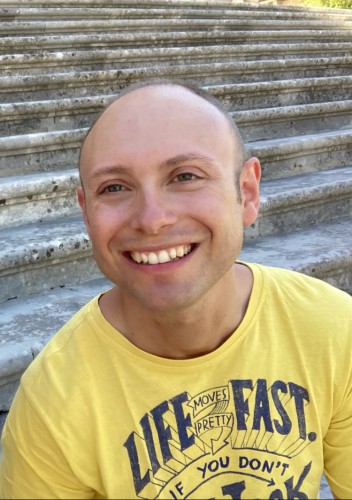
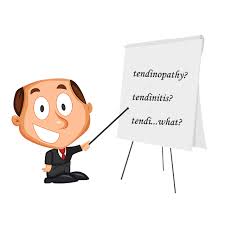
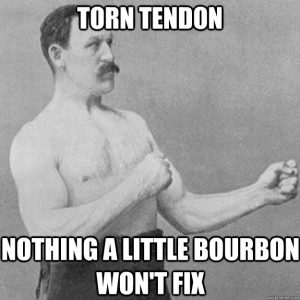
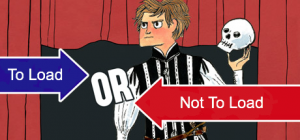
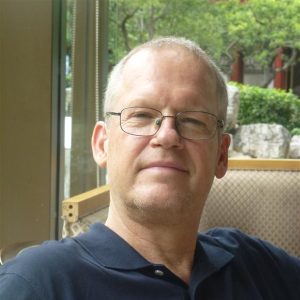

Comments